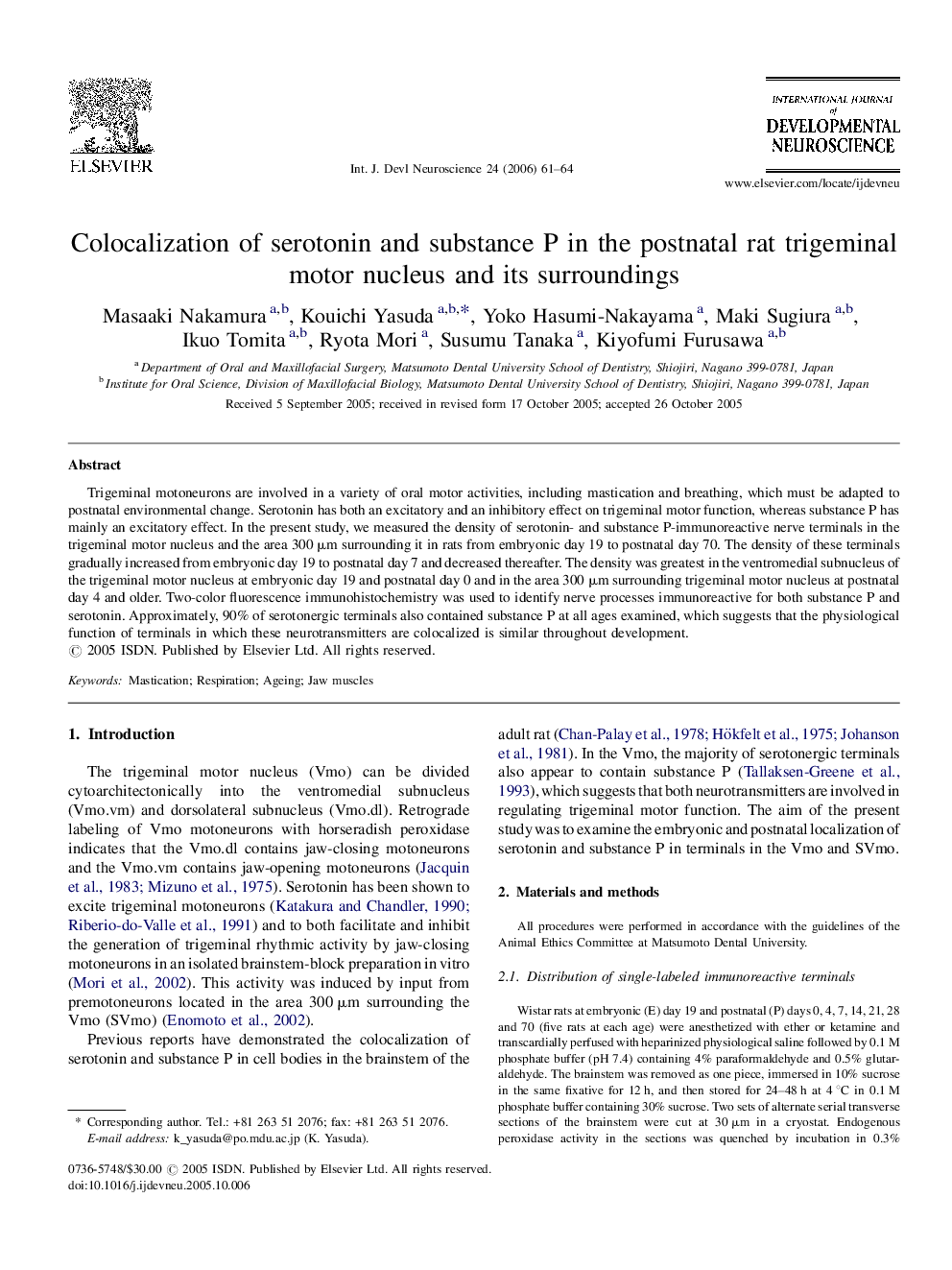| Article ID | Journal | Published Year | Pages | File Type |
|---|---|---|---|---|
| 2787205 | International Journal of Developmental Neuroscience | 2006 | 4 Pages |
Trigeminal motoneurons are involved in a variety of oral motor activities, including mastication and breathing, which must be adapted to postnatal environmental change. Serotonin has both an excitatory and an inhibitory effect on trigeminal motor function, whereas substance P has mainly an excitatory effect. In the present study, we measured the density of serotonin- and substance P-immunoreactive nerve terminals in the trigeminal motor nucleus and the area 300 μm surrounding it in rats from embryonic day 19 to postnatal day 70. The density of these terminals gradually increased from embryonic day 19 to postnatal day 7 and decreased thereafter. The density was greatest in the ventromedial subnucleus of the trigeminal motor nucleus at embryonic day 19 and postnatal day 0 and in the area 300 μm surrounding trigeminal motor nucleus at postnatal day 4 and older. Two-color fluorescence immunohistochemistry was used to identify nerve processes immunoreactive for both substance P and serotonin. Approximately, 90% of serotonergic terminals also contained substance P at all ages examined, which suggests that the physiological function of terminals in which these neurotransmitters are colocalized is similar throughout development.
